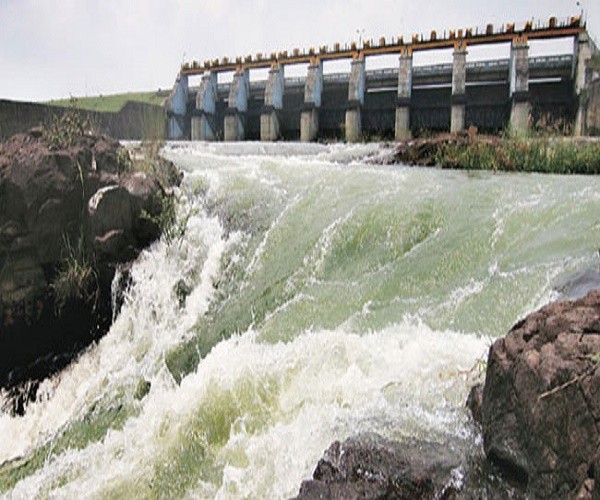In a country where agriculture used to be and still continues to be at the mercy of vagaries of monsoon irrigation is an important sector to focus on in the interests of farmers. Even before Independence Sir Arthur Cotton revolutionised agriculture in the coastal districts of Andhra area of Madras Presidency by constructing barrages across river Godavari and Krishna.
After Independence right from the first plan, focus was on irrigation with taking up of construction of multipurpose projects like Bhakra Nangal project on river Sutlej, Hirakud project on river Mahanadi and Nagarjuna Sagar Project on Krishna river.
Described by Jawaharlal Nehru as temples of modern India these major multipurpose projects have in addition to irrigation were useful for flood control, navigation, hydropower production et cetera and played an important role in ensuring assured water supply for green revolution initiatives at a later date.
However, slowly and steadily, irrigation projects from being farmer- centric have started becoming contractor- centric. Politicians have realised these can become milking cows for their election funding. The interests of contractors rather than that of farmers started dictating the projects that were taken up and the flow of funds to projects.
A rigorous cost benefit analysis done to prioritise the project in terms of taking up and funding was given a go- by and taking up of the project is done in an arbitrary manner focusing on those projects which would facilitate maximum kickbacks.
Since outlays for major projects are huge and facilitate centralised corruption, focus has shifted to major projects compared to minor projects where the outlays are going to be small and dispersed. Simultaneously the most pliable officers are posted in the irrigation sector to facilitate skimming of the projects by a strong nexus of bureaucrats, politicians and contractors.
The advent of lift irrigation schemes made matters easier. Major projects with huge land acquisition are spread over a long period of time and corruption in these projects is going to be also spread out benefiting different people over a period of time in different proportions. With the advent of lift irrigation there is no such time lag.
Since there is minimum land acquisition required they can be completed in a shorter period of time spoils being appropriately shared with regimes in power at that point of time. That is why we see a lot of interest in lift irrigation schemes without any analysis of the operational costs and running costs of those lifts on an annual basis.
In fact, in some of those lifts already taken up electricity consumption cost per an acre of land irrigated comes to Rs.10000 per one crop which clearly may not be sustainable in the long. Lift irrigation planned properly can be a great boon to dry crops and horticultural crops.
If they are used for life-saving irrigation or filling up of tanks to facilitate building up of groundwater levels can be of great use with minimum cost. But if they are used for irrigating water intensive crops by gravitation after the lift they may not be sustainable in the long run. No such analysis and prioritisation is done before taking up these projects.
By now a practice has developed where in mobilisation advance goes to the politicians and bureaucrats as per prior commitments. Thus the risks of the politicians are covered even before the project starts.
Hence this mobilisation advance file is chased from point to point not by the contractor but by the political leadership itself. Depending upon the size of the project and amount involved in the mobilisation advance monitoring can be at highest political level.
Not surprising when consequent to 14th Finance commission recommendations the share of states in the divisible pool of taxes increased from 32% to 42% in states like Andhra Pradesh where this technique has been perfected the irrigation expenditure has increased by more than 50%.
There is already sunk investment of 50,000 crores in Andhra Pradesh irrigation projects which have not seen the light of the day in terms of completion as per 2016-17 CAG report.
There are talks of taking Godavari water to Krishna and from there to Penna river via Buckingham canal and lifting it up to reach higher levels. Nobody talks of the cost or time frame and the relevance of the project. Engineers who know the truth prefer to keep silent in meetings.
Taking up such projects without proper investigation and cost benefit analysis would ruin the future of the state same way as ill thought out capital as a mega city is already ruining the future of the state. #KhabarLive







